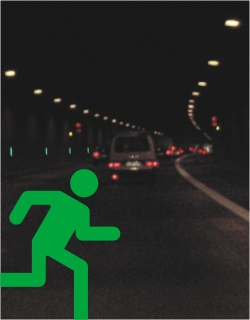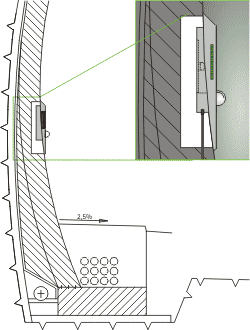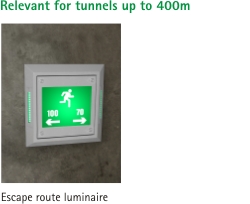|
|
Tunnel luminaires |
|
|
|
|
|
|
|
|
|
|
| |
|
|
|
|
|
|
|
|
|
|
|
|
| |
|
|
|
|
|
|
|
|
|
|
|
|
 |
 |
The revised, new edition of the "Directives for the Equipment and Operation of Road Tunnels" (RABT 2003), in conjunction with the "General Circular on Road Construction No. 19/2005", has come as a reaction to the increased risk of accident in European road tunnels. The increasing traffic volumes in road tunnels is, on its own, a factor that leads to a statistically higher probability of traffic accidents – as was confirmed by the devastating fire catastrophes in various Alpine tunnels in recent years.
|
 |
|
| |
|
| |
|
 |
 |
|

|
|
In addition to prevention (i.e. the avoidance of hazards and accidents in tunnels), the new version of the RABT directive gives increasing prominence to personal safety. Top priority here is given to enabling road users to rescue themselves. In the event of an accident, people located in a tunnel should be able to get themselves to safety without having to wait for the arrival of rescue services. In addition to the precautionary constructional measures, comprehensive protection of tunnel users is provided by a tunnel-specific surveillance and operating system and a complex safety system. In the tunnel, the relevant escape routes and emergency exits are signposted. Emergency exits are located at a minimum spacing of 300 metres. The escape routes are equipped with permanently lit, self-illuminated emergency signs and with orientation luminaires of high brightness, spaced at about every 25 metres, which only come on in the event of fire and which direct to the nearest emergency exits. |
 |

|
| |
|
|
 |
|
|
 |
 |
 |
 |
 |
 |
 |
 |
 |
 |
 |
 |
 |
|
|
|
|
|
|
|
|
|
|
|
|
 |
|
|